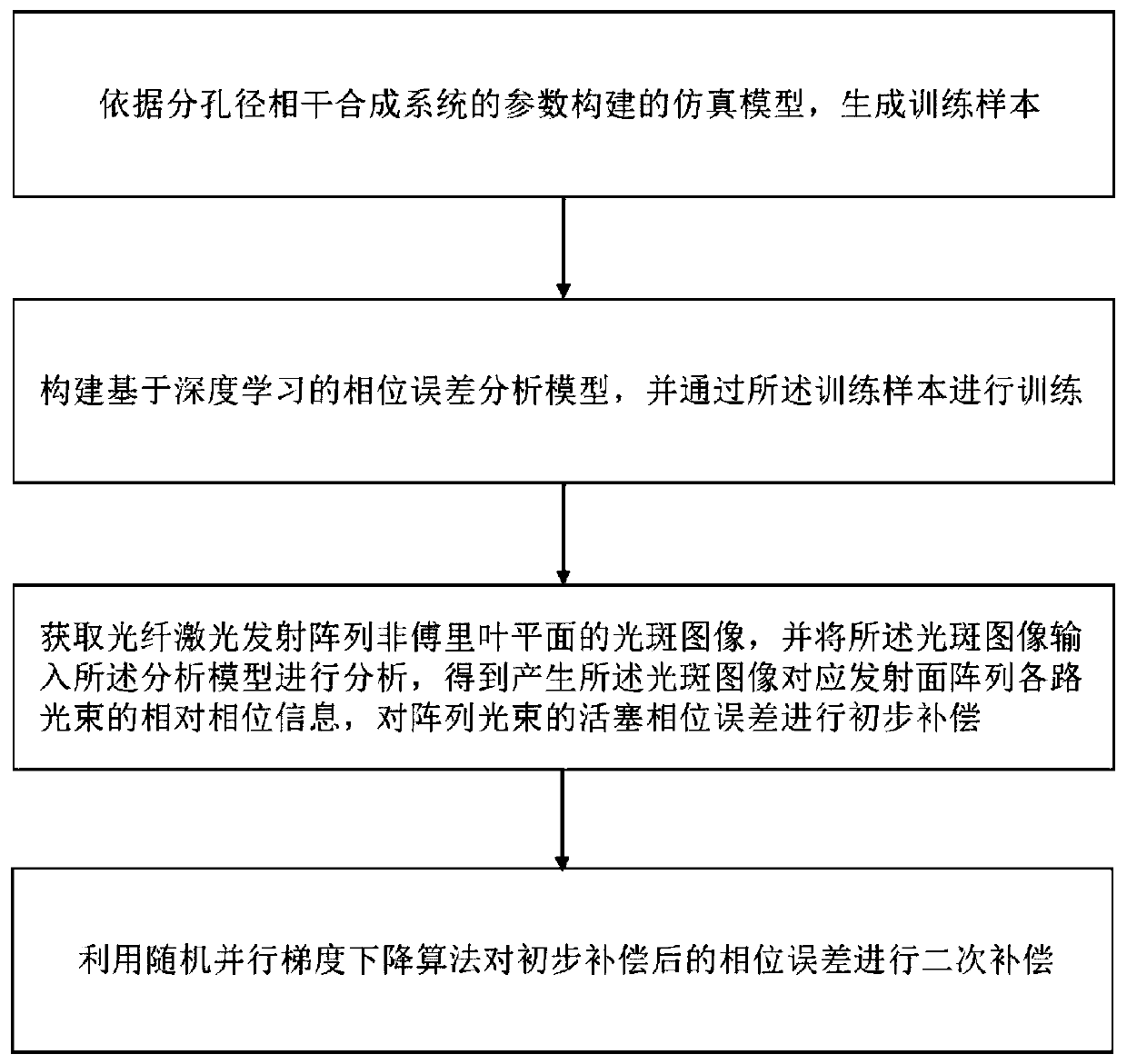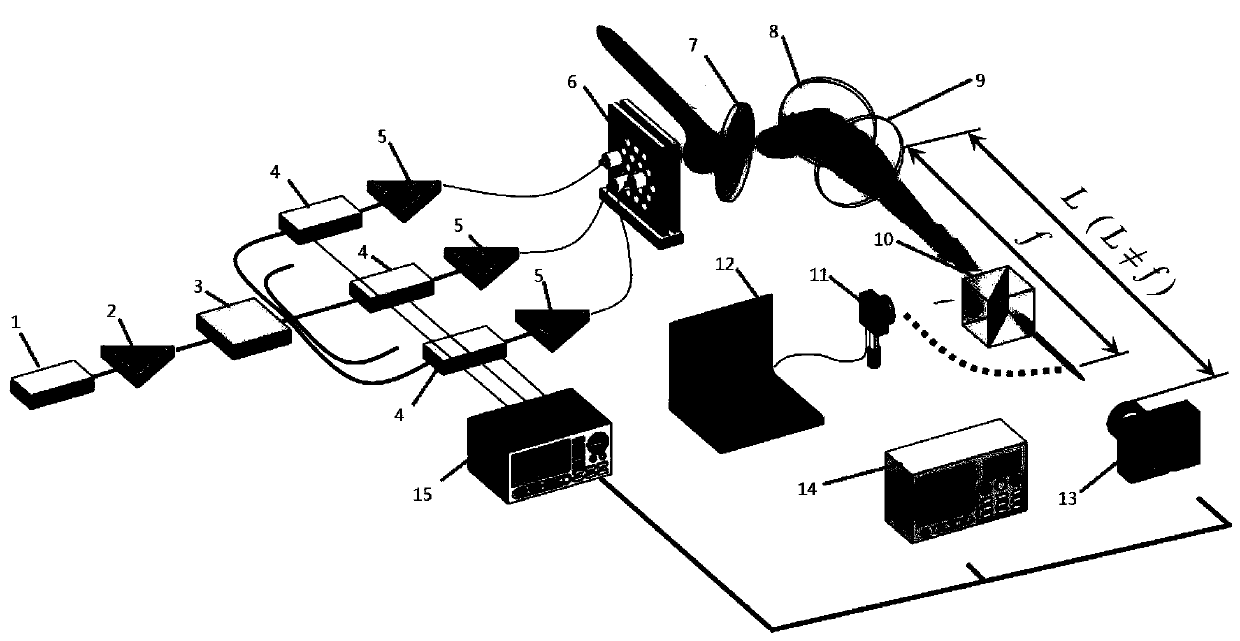Deep learning-based fiber laser sub-aperture coherent synthesis phase control method
A fiber laser, coherent synthesis technology, applied in lasers, laser parts, optics, etc., can solve the problems of phase modulation carrier frequency increase, system complexity limit array beam, phase noise characteristic frequency increase, etc., to achieve accurate preliminary compensation, Reduce the number of convergence steps and improve the effect of control bandwidth
- Summary
- Abstract
- Description
- Claims
- Application Information
AI Technical Summary
Problems solved by technology
Method used
Image
Examples
Embodiment Construction
[0038] Embodiments of the present invention will be further described in detail below in conjunction with the accompanying drawings.
[0039] Such as figure 1 As shown, an embodiment provided by the present invention, a deep learning-based fiber laser sub-aperture coherent synthesis phase control method, includes:
[0040] The non-Fourier plane spot images of the fiber laser sub-aperture coherent combining system are obtained as training samples, and the analysis model is trained by the training samples. The training samples include non-Fourier plane spot images and sample labels corresponding to the non-Fourier plane spot images, and the sample labels include a one-dimensional vector composed of relative phases of sub-beams in the low-power sampling array beam.
[0041] In the fiber laser sub-aperture coherent synthesis system, the non-Fourier plane spot image corresponding to the fiber laser emitting surface array beam containing phase noise to be controlled is obtained in ...
PUM
 Login to View More
Login to View More Abstract
Description
Claims
Application Information
 Login to View More
Login to View More - R&D
- Intellectual Property
- Life Sciences
- Materials
- Tech Scout
- Unparalleled Data Quality
- Higher Quality Content
- 60% Fewer Hallucinations
Browse by: Latest US Patents, China's latest patents, Technical Efficacy Thesaurus, Application Domain, Technology Topic, Popular Technical Reports.
© 2025 PatSnap. All rights reserved.Legal|Privacy policy|Modern Slavery Act Transparency Statement|Sitemap|About US| Contact US: help@patsnap.com



